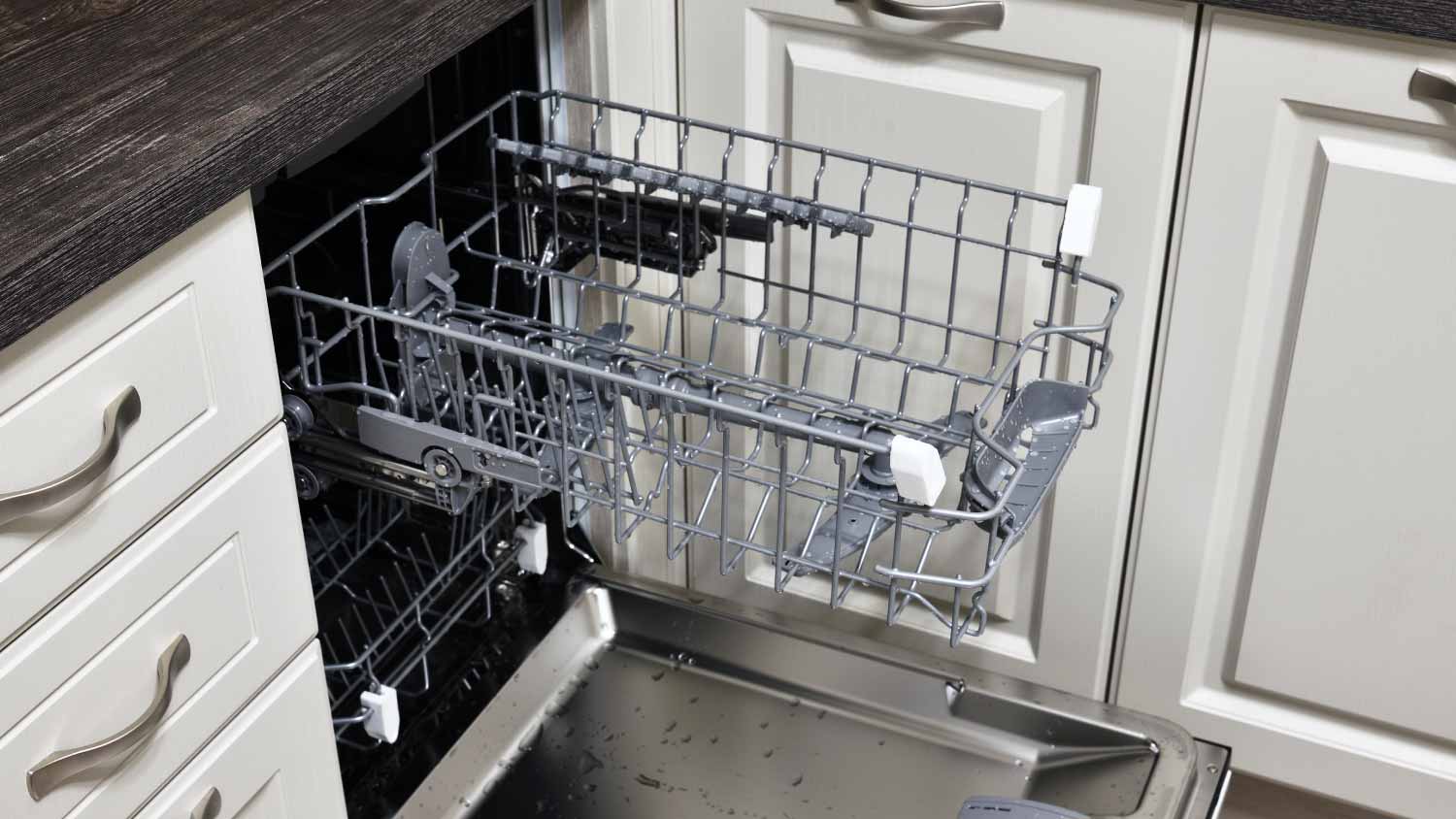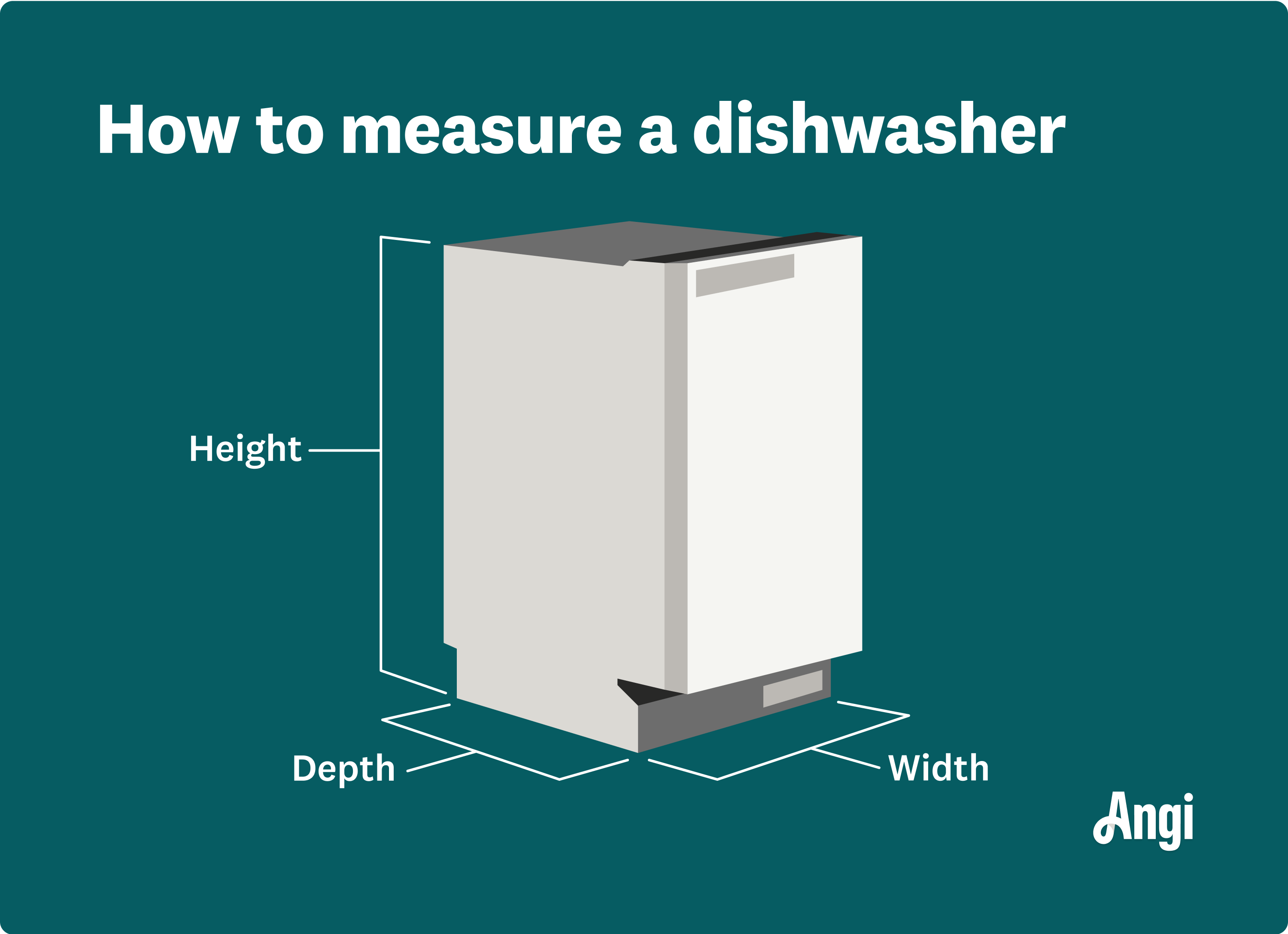
Depending on repair needs and machine age and type, the cost to replace a heating element in a dryer can vary. Learn the average repair costs.
Your appliance size scales with the size of your kitchen and the size of your household


24-inch-wide dishwashers are the most common size.
Dishwashers use significantly less energy than handwashing.
The smallest dishwasher sizes are only slightly larger than a kitchen drawer.
A dishwasher is often considered one of the most convenient appliances in the home. You not only save money and water using a dishwasher, but a tremendous amount of time as well. They are simple machines, so dishwasher installation costs are low even if they are one of the more expensive appliances in a kitchen. The good news is, they more than pay for themselves when it comes to water use and energy efficiency.
| Dishwasher Type | Size |
|---|---|
| Standard size | 24-inch wide square |
| Compact size | 18-inch wide, 24-inch tall |
| Drawer dishwasher | 24-inch wide, short |
The three sizes below cover almost all residential dishwashers. One of the reasons for this is convenience. Dishwashers that are the same size are easy to resell and install in a new home. This is because the cutout or space allocated in a kitchen will be the same. More often than not, the hookups are in the same spot too. Within what is considered the standard type of dishwasher, there are some varying dimensions.
Appliances are not a one-size-fits-all solution. Whether you’re replacing an existing appliance or installing a new one in an updated room or home, it’s extremely important to properly measure the space it’s going to live—and to consider factors like doors, drawers, etc.
The second reason dishwashers are almost always the two sizes below is that they need to be ADA-compliant. ADA refers to the Standards for Accessible Design, and is determined by the Americans with Disabilities Act, or ADA. These standards are put in place to ensure a building is physically accessible to people with disabilities.

This is the standard size and the size most people think of when they hear the word dishwasher. This universal size is found in apartment rentals and most single-family homes. The reason for its popularity is it tends to be able to handle dishes for 1-4 people and is generally energy efficient as it is cheaper to run a 24-inch-wide dishwasher once than a smaller one twice.

This size is seen much less than the above, but it's the second most popular size. Whereas you see the 24-inch-wide model in most homes with more than one or two people, those living alone or in smaller apartments might find an 18-inch-wide model a better fit.

This size of dishwasher is the smallest you’re likely to see or buy. Although the depth and width are similar to the larger size above, it’s the height where this dishwasher is different. This size is what’s known as a “drawer” dishwasher, and is a pull-out dishwasher rather than one with a door. There are ADA-compliant models and may be best for those in small spaces or people who live alone or with one other person. They’re also the type of dishwasher that saves the most water.
Portable dishwashers are a good choice if you don’t have the available kitchen space to place a dishwasher under the counter. They’re also a great option if you are living somewhere temporarily that may not have been zoned or permitted for a permanent install, such as those working on job sites or in buildings being renovated. They require no installation other than hooking up a drain hose, and can even be cheaper—and lighter—than built-in models.
There are a few reasons why you may choose to install more than one dishwasher. Typically, this is because you want to wash separate items in separate dishwashers. This could be because of acute allergies or a need for a special dishwasher for particular items such as glassware or antique dishware. Another reason is for the sheer speed, especially if you have a large household or do a lot of hosting and accumulate dirty dishes quickly.
The most common choice is to pick two dishwashers of identical size and place one on each side of the sink, which makes them easier to fill and empty. You’ll need to consult a local plumber to install the additional drain hookups as most sinks can only accommodate one dishwasher.
If standard kitchen plumbing won’t allow for the added stress of a dishwasher, homeowners can install a dishwasher in other large spaces, such as a garage, basement, or utility room. In these cases, you can pick any size dishwasher that works in that secondary space.

Measuring for a dishwasher isn’t as complicated as, say, measuring for an oven. If you are measuring a space that already exists, you should measure all three dimensions (height, width, and depth). There needs to be enough depth for the hoses to attach and not kink. The general consensus is that 5 centimeters—almost 2 inches—is enough.
The height and width required need to allow enough room for you to fit the dishwasher when you install it, but also some room for movement. Don’t worry too much if the fit isn’t perfectly snug, as there are mounting brackets that screw into the cabinetry that hold the dishwasher in place. Just be aware that you may need to move or consider the type of garbage disposal under the sink.
If there isn’t enough space between your dishwasher and your cabinetry, there are a few problems that could arise. Dishwashers need to vent and so does the space around them. Improper ventilation could lead to mold growth. If you have a particularly animated appliance, the shaking of the cycles could also lead to long-term damage of both the dishwasher and the cabinetry surrounding it.
Once you’ve measured, it’s time to install your dishwasher. These appliances are seriously heavy, often weighing over 150 pounds, so if you’re unsure about the weight or installing it safely, it’s probably best to contact a dishwasher installation professional near you.
When choosing a dishwasher size, the two main factors to consider are the size of your household and the available space for the appliance. An apartment with two people can function perfectly well with a drawer unit, an 18-inch wide unit, or even a portable or countertop dishwasher. However, a family of six will need at least one 24-inch wide, if not a combination of different types.
Large kitchens will have an abundance of dishwasher placement options, but in smaller rentals or older houses with small kitchens, you may need to get creative if you want a full-size appliance. For such homes, you may need to wash larger items and use a smaller dishwasher for plates, glasses, and silverware.
If your kitchen has limited countertop space and nowhere to place a full-size dishwasher, a drawer unit can be inconspicuously placed and take care of most, if not all, a small home’s dishwashing needs. However, the simplest solution is to just replace an existing dishwasher with one of the same size.
So, what happens if you purchase the wrong size dishwasher? There are four options:
Immediately return it.
Create space in the kitchen by removing or moving cabinetry.
Add plumbing anywhere you want to place it. It doesn’t need to be in the kitchen.
Sell the appliance.
Many large box stores will have the option of returning an appliance that doesn’t fit. This actually happens fairly frequently with contractors, which means the stores are used to accepting appliances that haven’t been used. This is the easiest solution, but what if you want to keep the appliance?
In such instances, you will either need to make adjustments to the kitchen itself or consider placing the dishwasher in another room, such as a butler’s pantry. If you need to make any adjustments to kitchen cabinets or counters, you should hire a dishwasher installer to measure the space and confirm the plumbing. While dishwashers aren’t terribly complicated to install, you don’t want to wake up to a flooded kitchen.
According to Angi data, the most common service request for an appliance installation is split between a dishwasher and a microwave or oven, both at 17% of customers. Other common appliances homeowners request help installing include washers, dryers, and a refrigerator or freezer.
From average costs to expert advice, get all the answers you need to get your job done.

Depending on repair needs and machine age and type, the cost to replace a heating element in a dryer can vary. Learn the average repair costs.

Looking to keep warm this winter without the high utility bills? Use this pellet stove installation cost guide to see what a natural heating solution will cost.

Explore the common types of oven repairs and how much they cost based on the problem, the part, and the type of oven. This guide will tell you the average cost to repair an oven.

Who fixes dryers if yours isn’t working? A dryer repair company is a good place to start, but you have some options, including an electrician.

A leaking washing machine can cause big problems like water damage, so make sure your washing machine drain is up to code with this helpful guide.

Burnt popcorn or a candle gone wrong can smell pungent and overwhelming. Find out how to get these smoky smells out of your house for good.